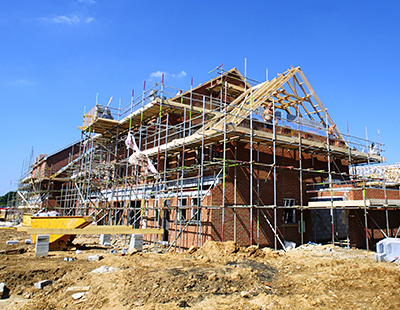
Local councils should allow new homes to be built on land next to the UK’s railway stations, with the existing light industrial units and goods yards there moved instead to edge of town locations.
That’s according to leading land agent Aston Mead, which says that not only would such a move provide the potential for hundreds of new residential commuter homes to be built, it would also mean the removal of many delivery lorries and heavy goods vehicles from town centres – easing pollution and the potential for traffic jams and accidents.
“As I travel around the country by train, I see dozens of examples of large areas of land next to railway stations, which are currently taken up by light industry such as builders’ merchants, often extending to several acres each,” Adam Hesse, director at Aston Mead Land & Planning, said.
“Presumably the existence of these sites goes back to the days when trains delivered coal and building materials, so the yards had to be close by,” he added. “But nowadays they would be ideal locations for hundreds of new high-rise residential units, which would be perfect for commuters – particularly as the proximity of the railway station would mean that less on-site parking would be needed, and fewer car journeys would be taken as a result.”
Hesse argues that if local councils could harness the potential of these areas for residential development, ‘buying them up by compulsory purchase if necessary’, then the heavy traffic and pollution associated with the current industrial units could be kept away from the centre by moving them to the edge of town instead.
Such a scheme, Hesse says, could provide another income stream for local authorities, which – despite guidelines in place designed to limit the practice – are still spending £100 million every month purchasing shops, offices and retail centres, typically away from their local area, in order to chase returns to replace revenue lost in government cuts.
“The truth is that local councils are some of the largest landowners in the country,” Hesse explained. “So they are in an excellent position to release land on the edge of a town to develop light industrial sites, which they could then let to the businesses which were previously next to the railway station.
Hesse believes that surely it makes a lot more sense for councils to keep hold of their assets at much lower risk and at higher returns, ‘than to risk gambling millions of pounds of taxpayer money investing in properties hundreds of miles away, in areas they know next to nothing about’.
“Commuters would flock to the new homes, which could have restaurants and bars built at ground level to keep the area buzzing during the evenings, while town centres would benefit from fewer delivery vehicles, because the light industrial units would be moved out of town, nearer main roads, and motorway networks. It’s a win for everyone involved!” Hesse concluded.









.png)










Join the conversation
Be the first to comment (please use the comment box below)
Please login to comment